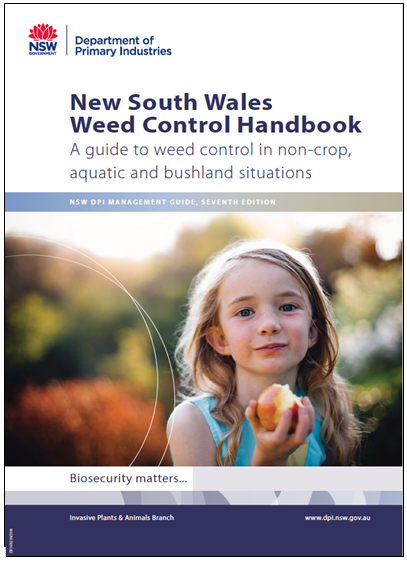Although the use of herbicides is not always essential, herbicides can be an important and effective component of any weed control program. In some situations herbicides offer the best or sometimes only practical, cost-effective and selective method of managing certain weeds.
Because herbicides reduce the need for cultivation, they can prevent soil erosion and water loss, and are widely used in conservation farming.

Although there are a large variety of herbicides available they function in a limited number of ways, known as modes of action. These modes of action determine how the herbicide controls weeds:
- by speeding up, stopping or changing the plant’s normal growth patterns
- by desiccating (drying out) the leaves or stems
- by defoliating the plant (making it drop its leaves).
The well-known herbicide glyphosate, for example, prevents the target plant making key amino acids.
In some cases, a weed is only susceptible to one specific herbicide and it is important to use the correct product and application rate for control of that particular weed. Common mistakes include incorrect identification of the weed, applying herbicides out of season or at the incorrect time of the year, when target plants are stressed or using inappropriate products.In most cases, weeds must be actively growing to be vulnerable to herbicide treatments.
Herbicides also have differing selectivities, and can be categorised as either broad spectrum (working on a wide variety of plants) or selective (working on a specific range of plants).
For example some herbicides are effective on grasses, whereas others are more effective on woody weeds and will leave grasses intact to provide competition against re-establishment of the weeds.
As well as using different modes of action, herbicides can be classified according to how they are taken up by the plant. The main types are:
- Contact - these kill plant tissue at or near the point of contact with the herbicide (they do not spread around the plant). Therefore, they require even coverage in their application.
- Systemic - these move through the plant tissues via the plant’s circulation system, and can be injected into the plant.
- Residual - these can be applied to the soil in order to kill weeds by root/shoot uptake. They remain active in the ground for a certain length of time, and can control germinating seedlings.
The overuse of herbicides with the same mode of action can lead to herbicide resistance in some weed species.
Before applying any herbicide it is extremely important to read and follow the information contained on the herbicide label. This includes:
• the signal heading (indicating the product's hazard level)
• the trade name
• the claims for use
• the active constituent
• the net contents
• directions for use
• limitations for use
• withholding period
• important notes
• storage instructions
• safety directions and first aid
• dangerous goods notification
• expiry date
• mode of action (type of herbicide)
By law, herbicides can only be used in accordance with the label.
The Australian Pesticides and Veterinary Medicines Authority (APVMA) is the Australian Government authority responsible for the independent assessment and registration of pesticides and veterinary medicines. The APVMA keeps a record of all registered pesticides in Australia, and their approved uses and also reviews older chemicals to make sure that they continue to meet contemporary high standards.
How to apply herbicides
There are several techniques that can be used to apply herbicides. Some of the most common are outlined below.
- Prev
- Next >>

